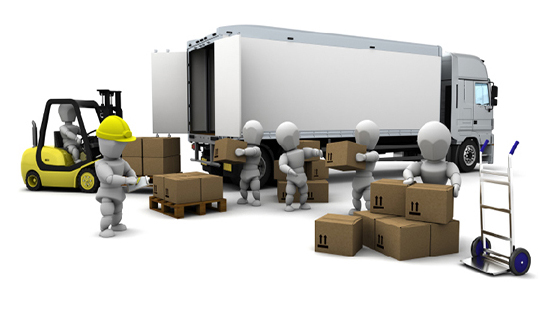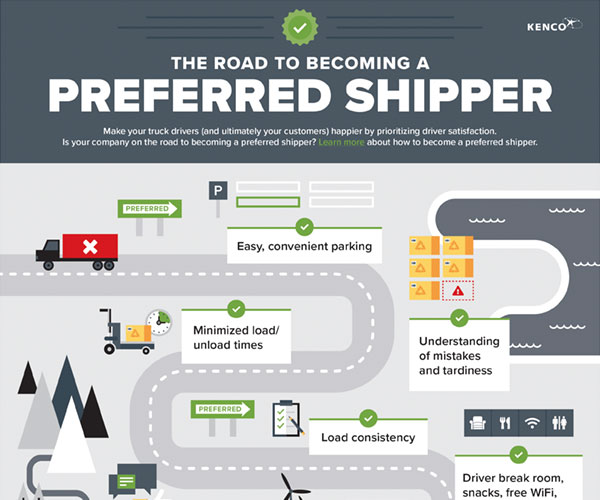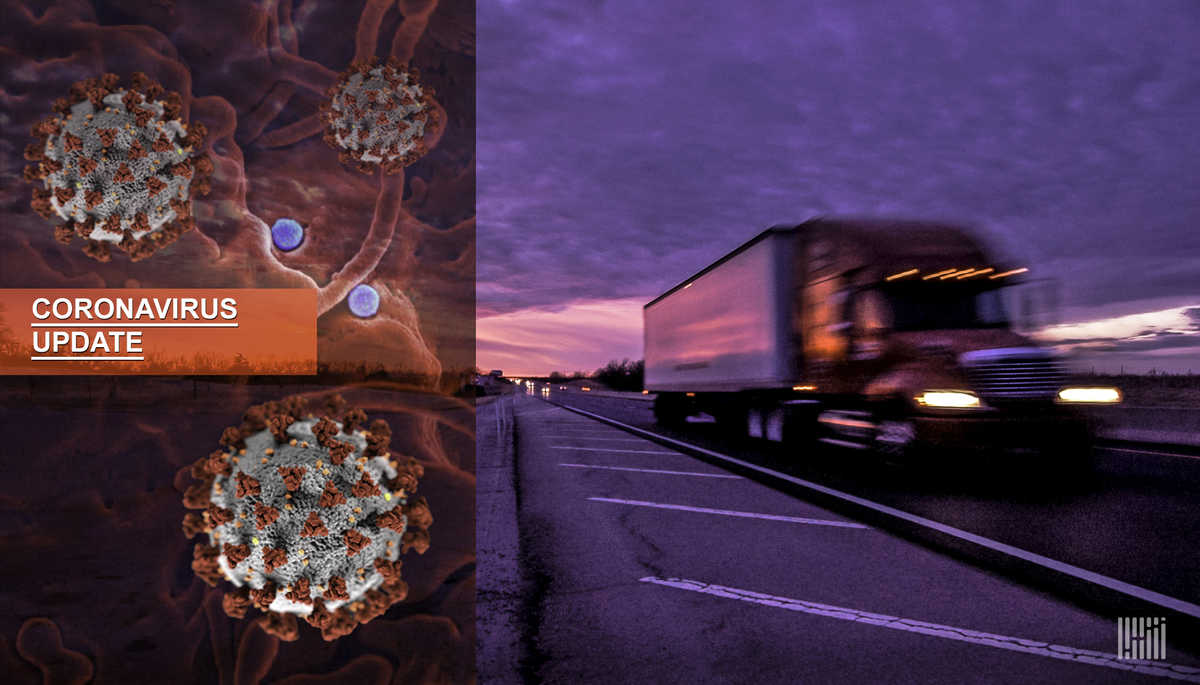Let’s take a break from the Covid-9 effect on the Logistics industry. Things are slowing opening back up. Hopefully, the trend continues with no significant spikes in infection rates. That being said let’s look at some industry trends we should all be aware of this year.
Read More
Topics:
Freight Bill Auditing,
Intermodal Freight,
Logistics Business,
Freight Bill Audit,
3D Printing,
Industry Trends,
Big Data
As retailers struggle with re-opening strategies it’s clear the new normal will be something we have never experienced. Consumers in many areas of the world have tightened their wallets and eliminated discretionary spending because of lost jobs, lower wages and uncertainty about how long the COVID-19 pandemic will last.
Read More
Topics:
Supply Chain Management,
Third Party Logistics,
Freight Bill Auditing,
Transportation News,
Logistics Business,
Freight Bill Audit,
Logistics News,
Industry Trends

Data is the new precious metal and it is becoming more essential than ever before. Technological leaps like blockchain, artificial intelligence and machine learning run on data. They’re already beginning to transform supply chain operations across many sectors.
Is your supply chain organization prepared to adopt these emerging technologies and generate the operational improvements to deliver the anticipated ROI? As we’re seeing, digital technology in the supply chain enables end-to-end decision-making, visibility into supply-demand information across the network and supports the operational level response in plants, DCs and retail stores.
Sometimes it takes an outsider to ask the obvious questions about processes that employees no longer question. Whether the questions have to do with routing guides, packaging practices or distribution center locations, it is often helpful to get an independent perspective. One of the main benefits of sharing data with a third party is an objective perspective that can cut through the culture and the “We’ve always done it that way” syndrome. A trusted Enterprise Logistics Provider with deep technology and operational experience can provide that objective view of the data and make recommendations without regard to internal influences.
Careful and Regular Data Collection is Critical
Data management is not a “set it and forget it” activity. A culture of continuous learning will be the key. Your enterprise must continually evaluate the integrity of your data collection and management programs not only against your internal requirements but also external developments. Are there gaps or inconsistencies in your data? Will it be available in the formats necessary to support adoption of relevant technology? For example, inventory optimization relies on a body of robust, accurate data. Without it, the results will be skewed and potentially damaging to your supply chain. Is your enterprise able to ensure your data is accurate and up to date? Garbage in will get you garbage out.
Look to Industry Professionals for Guidance
Rather than investing in technology tools directly, a trusted Enterprise Logistics Provider with deep technological expertise can support data management and analysis capabilities as a value-add in the partnership. As a solutions provider, the Enterprise Logistics Provider can stay up to date on the latest developments and evolution, reducing the need for ongoing investments in IT infrastructure.
Creating a comprehensive plan to clean and structure existing data and capture as much data as possible going forward will deliver benefits across the enterprise. As the digitization of the supply chain continues, those who aren’t able to ask the right questions could be left behind. For help determining if your data is ready to support the next level of technology, contact us today.
Read More
Topics:
Logistics News,
Industry Trends,
Technology,
Big Data
This month industry analysts are reporting significant upticks in spot rates and demand due to restocking demand from grocery and home good retailers. Spot market load volumes and rates for van and reefer equipment saw mostly significant gains in March due to the ongoing corona-virus pandemic, according to data issued by Portland, Oregon-based freight marketplace platform and information provider DAT.
For the week of March 16-March 22, DAT reported the following annual differences:
Read More
Topics:
Logistics Business,
Shipping News,
Logistics News,
Industry Trends

In January 2020, the World Health Organization (WHO) declared the outbreak of a new coronavirus disease in Hubei Province, China to be a Public Health Emergency of International Concern. WHO stated there is a high risk of the 2019 coronavirus disease (COVID-19) spreading to other countries around the world. WHO and public health authorities around the world are taking action to contain the COVID-19 outbreak. However, long term success cannot be taken for granted. All sections of our society, including businesses and employers, must play a role if we are to stop the spread of this disease.
How COVID-19 Spreads
When someone who has COVID-19 coughs or exhales, they release droplets of infected fluid. Most of these droplets fall on nearby surfaces and objects - such as desks, tables or telephones. People could catch COVID-19 by touching contaminated surfaces or objects and then touching their eyes, nose or mouth. If they are standing within one meter of a person with COVID-19, they can catch it by breathing in droplets coughed out or exhaled by them. In other words, COVID-19 spreads in a similar way to flu. Most persons infected with COVID-19 experience mild symptoms and recover. However, some go on to experience more serious illness and may require hospital care. Risk of serious illness rises with age. People over 40 seem to be more vulnerable than those under 40. People with weakened immune systems and people with conditions such as diabetes, heart and lung disease are also more vulnerable to serious illness.
Keeping Transportation Professionals Safe at Work
The Transportation Intermediaries Association has created a reference guide for its members to share with their customers to limit and prevent the likelihood of being exposed to this virus. Shippers, receivers, and truck drivers that are in personal contact (as they facilitate the movement of freight) need to be aware of – and take – necessary steps in order to minimize and prevent the spread of COVID-19. As an industry, we are in this together and we all need to look out for one another. If you are a shipper or receiver, consider providing truck drivers with a bottle of hand sanitizer or alcohol wipes to keep them healthy (and keep our nation’s freight moving).
The Centers for Disease & Prevention (CDC) also recommends following 6 key steps to help prevent the spread of COVID-19, which TIA has summarized in a downloadable PDF.
Land Link Traffic Services will continue our 24 hour service throughout this crisis. Please feel free to contact us 732.899.4242 or through this website.
Read More
Topics:
Transportation News,
Shipping News,
Industry Trends

The debate over whether density-based pricing will succeed in toppling the traditional National Motor Freight Classification’s (NMFC) based pricing in the LTL industry is an ongoing debate. Carriers are pushing for dimensional pricing to combat the profitability of lightweight shipments. This is the basis of the argument. Under the NMFC classification density was taken into consideration as was packaging and commodity but it was largely based upon weight. Back in the day, carriers in a battle over business after deregulation, were offering FAK (Freight All Kinds ) tariffs to get the business. This strategy ultimately led to unprofitable operation ratios, subpar delivery performance and ultimately the bankruptcy of some major carriers. Jevic Transportation of Delanco, NJ is the first one that comes to my mind. Interestingly New Century transport, which was founded by Jevic‘s founder, adopted a similar strategy ending in the exact same fate. Considering this history and the recent high-profile bankruptcies of other major national freight carriers in recent years, one would have to conclude the days of beating up the carrier on rates is over. Unlike in the past, the LTL industry today has a massive volume of smaller shipments. There is also the challenge of completing same-day deliveries or time definite deliveries. Likewise, these shipments are not always of consistent size and density, making it difficult for LTL shippers to sustain profitability.
Today, if you want dependable service, you’re going to have to pay for it. Let’s see if we can help you avoid some of the pitfalls to come.
Dimensional Pricing
There is no secret to dimensional pricing. It’s really a simple equation; L x W x H / 139. It could be argued that the ecommerce boom started all this controversy overweight vs size. Ecommerce shippers have millions of items in inventory and a finite amount of box sizes. I’ve been personally amazed at the box size of some items I’ve received. It didn’t take long for the parcel carriers to figure that their trucks were dimming out before weighing out. This may have been the catalyst for dimensional pricing. It wasn’t long before the LTL carriers arrived at the same conclusion. They were charging by pound through diluted tariffs, not by the room the pallet actually occupied.
FedEx Freight, XPO Logistics, and other LTL carriers have been installing equipment that can scan a palletized shipment and, combined with scales, provide the cubic dimensions and weight needed to check the shipment classification. The consensus among LTL industry executives is that the current classification system is on its way out. The reality is that LTL carriers sell space in a trailer. Using the dimensions of a pallet identifies precisely how much space that shipment will require, thereby providing accurate real estate pricing.
Shippers Prepare
Many shippers believe dimensional pricing amounts to a rate increase, and the number of shipments, they say, are re-billed once they go through a dimensioner, supporting their contention. It can also be argued the shippers are finally being charged an accurate rate. Shippers who are not prepared to invest in equipment to measure their shipments’ dimensional weight will have to adopt strict packaging protocols to package their freight in a uniform method as to avoid a dimensional pricing situation.
The ability to double stack pallets is a prime example. Under dimensional pricing a pallet that cannot be double stacked will be billed at 2 pallet spaces since the pallet will essentially occupy the air above it. To date, much of the use of dimensional pricing has been limited to W & I procedures at truck terminals. However, by capturing more and more dimensional shipment data, LTL carriers are laying the data foundation needed for the expanded use of dimensional pricing.
Our supply chain managers at Land Link Traffic Services can help with packaging strategies, supply chain management techniques to maximize lane and weight balancing strategies and overall shipment planning protocols to maximize your freight spend in this more expensive environment. Finally, the Coronavirus will certainly cause some challenging strain on the supply chain. Don’t wander through this uncharted territory alone. Contact us today for a supply chain consultation.
Read More
Topics:
Transportation News,
Logistics Business,
Shipping News,
Logistics News,
Industry Trends,
Technology

The recent effects of Tariffs on the supply chain may pale in comparison to the potential aftermath of SARS-CoV-2. This virus has the potential to cause an economic shock unlike those that led to recessions in the recent past; the oil spike in 1991 that hit consumer wallets or the credit crunch in 2008 that seized up lending markets. The coronavirus has severely disrupted nearly every link in the global supply chain, from raw materials to components to finished goods, which could lead to curtailed production, product shortages, and financial stress across a range of industries. How manufacturing delays ripple through the economy isn’t so straightforward, however. The multi-level nature of raw material procurement for any large manufacturer creates a potentially large field of collateral damage in the event of supply chain disruption. One missing part for the widget from that line halts production and delays everything behind it for unknown time period. This may be an excellent opportunity to consider contingency planning.
Read More
Topics:
Transportation News,
Shipping News,
Logistics News,
Industry Trends

It’s no secret, in any business relationship, that the easier the relationship between customer and provider the more smoothly things run. In a shipper/provider relationship this is particularly important. The intricacies of logistics can be very challenging given the nature of all the moving parts; desirability of lanes, pickup and delivery restrictions, equipment availability and all the issues that can happen on the way to a 1000 mile delivery. We have discussed the importance of becoming a preferred shipper in previous blogs. The impact of carrier relations on your supply chain is more important now than ever. Several factors are putting pressure on carrier/shipper relationships and performance. Fluctuating fuel costs, capacity issues, driver shortages, and carriers that abruptly go out of business can all take a toll on a shipper’s ability to get the right products to the right customer within the right time frame. Take the time to make some manageable changes to your supply chain protocols to improve operations, moral and overall supply chain efficiency.
Some Easy Fixes
There needs to be a culture shift in vendor relations, particularly when it comes to carriers. Historically, truckers have been treated as second-class citizens when it comes to, for example, driver accommodation and respect for one’s time. A reasonably comfortable waiting area for the driver is an inexpensive and easily implemented enhancement to the driver experience. Minimizing loading time is also an easy, low cost, improvement to loading and unloading dock protocol.
Read More
Topics:
Supply Chain Management,
Logistics Business,
Shipping News,
Logistics News,
Industry Trends
The federal government has proposed long-awaited changes to the hours-of-service rules that would increase truck drivers’ flexibility while on duty. FMCSA’s newly proposed HOS rule offers five main revisions to the existing HOS rules, which are based on extensive public comments shared with the agency since last year.
The adjustments would happen in five areas:
1. Flexibility for the 30-minute break rule
by tying the break requirement to eight hours of driving time without interruption for at least 30 minutes; and allowing the break to be satisfied by a driver using on-duty, not-driving status, rather than off-duty.
2. Modifying the sleeper-berth exception to allow drivers to split their required 10 hours off duty into two periods: one period of at least seven consecutive hours in the sleeper berth and the other period of at least two consecutive hours either off duty or in the sleeper berth. Neither period would count against the driver’s 14‑hour driving window.
3. Allowing one off-duty break of at least 30 minutes but not more than three hours that would pause a truck driver’s 14-hour driving window, provided the driver takes 10 consecutive hours off-duty at the end of the work shift.
4. Modifying the adverse driving conditions exception by extending by two hours the maximum window during which driving is permitted.
5. Changing to the short-haul exception available to certain commercial drivers by lengthening the drivers’ maximum on‑duty period from 12 to 14 hours and extending the distance limit within which the driver may operate from
100 air miles to 150 air miles.
The proposed rule would not increase driving time and would continue to prevent commercial operators from driving for more than eight consecutive hours without at least a 30-minute change in duty status.
Safety Remains The Driving Force For Both Sides
Most in the logistics industry consider trucking deregulated. While this perspective is accurate in a financial sense, the truth is trucking is among the most regulated industries in the country. It is important to understand government regulations add significantly to the cost of operations which, of course, is reflected in the rates. Most carrier executives question the depth and breadth of the regulations and how the federal regulators iron out their final rulemaking is critical to fleets’ efficiency and legal use of time. For example, a truck driver has 660 minutes (11 hours) of legal driving time during his or her 14-hour “on duty” time. How those minutes are divvied up not only matters to safety, but it’s a huge factor in both the driver’s compensation and the carrier’s financial wellbeing. Among the challenges of drafting regulations for the trucking industry is the myriad of equipment types and services offered. Dry van, refrigerated, bulk carriers and other specialty carriers have present different safety concerns. Add to that mix carriers who transport more dangerous commodities such as hazardous materials like chemicals and munitions, fuel and over-dimensional loads and you end up with multiple regulations to cover all possibilities.
Manufacturers Look To Technology for Help
Technology is constantly evolving, particularly for motor vehicles. Self-automated technologies such as automatic braking systems have already appeared in passenger vehicles and are rapidly becoming available for large semi-trucks as well. Safety systems recommended by AAA researchers include:
- Air disc brakes, which significantly reduce the distance a large truck needs to stop.
- Automatic emergency braking systems, which engage the brakes if the system detects the truck is about to collide with another vehicle or object.
- Lane departure warning systems, which detect when a truck drifts from its intended lane and may hit vehicles in neighboring lanes.
- Onboard video monitoring systems, which monitor the road in front of a truck or the driver’s actions inside the cab to detect when unsafe practices occur.
Some of these systems not only help reduce the risks of truck accidents but may also aid injured victims recover legally afterward. For example, onboard systems can record if the lane departure warnings triggered before the accident, or whether the automatic braking engaged. This can provide evidence that a truck driver was distracted, fatigued, or otherwise impaired behind the wheel. Onboard video monitoring systems are pretty much common these days. They provide a solid picture of what transpired in any incident. They are a welcome e addition to most fleets since they reduce litigation costs and help drivers become more safety conscious.
Read More
Topics:
Transportation News,
Logistics Business,
Shipping News,
Logistics News,
Industry Trends,
Technology












 Land-Link, a well respected professional organization, has been providing its clients with effective transportation and logistics solutions since 1978.
Land-Link, a well respected professional organization, has been providing its clients with effective transportation and logistics solutions since 1978.

